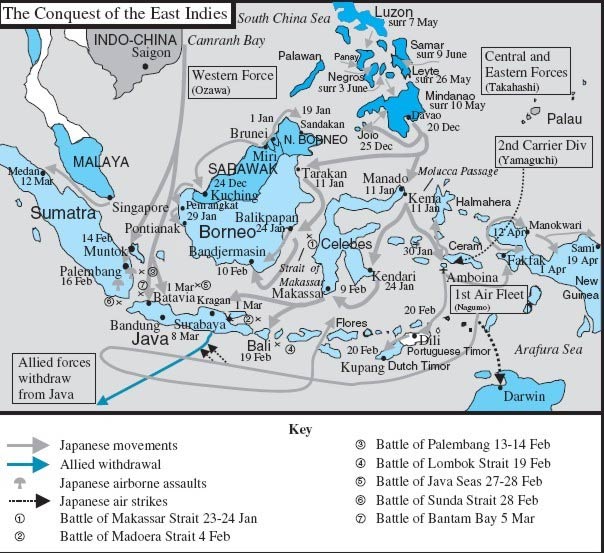
WHAT HAPPENED IN THE DUTCH EAST INDIES?
By Bob Jamison
In just two words: A lot! The Dutch have been the guiding light of the sleepy backwards country most of which were peasants and a preponderance of Asian and Arab influence. This was most important in the very early part of the l9th century because the Dutch were quick to realize the potential of world needs from the area.
Before the invasion of Indonesia by Japan and prior to the beginning of World War II, it became a most favorable target for Japan’s absolute necessity for oil in oil rich Sumatra, Indonesia. Also, it was well known that the Dutch had developed a market for not only oil but the Dutch East Indies provided the world with most of the world’s supply of quinine and pepper. Furthermore, a third of the world’s supply of rubber, one fourth of coconuts, and about one fifth of sugar, tea and coffee came from organized Dutch industry.
While in control of Indonesia, the Dutch recognized also the needs of the native Indonesians. They created the Ethical Policy in l901 that was likely the forerunner of welfare. Their efforts included education; unfortunately, most of the natives remained illiterate to the consternation of the erudite Dutch. Some of the benefits included irrigation systems, flood mitigation, communication and protection for native workers.
World War II beginning in Europe saw Nazi Germany conquer Holland, France and Poland in short order. During the onslaught by Germany, the defiant Dutch declared war against Japan also when Pearl Harbor was hit. Even though Holland had fallen, remaining in Indonesia was a considerable group of valiant members of the Royal Dutch Air Force. It was determined that they must be airlifted out of the area to prepare for future attacks against the Japanese. But many of these brave air force persons and their families were either captured or killed or died as captives. The rest of the population of Dutch was put in concentration prisons under the most horrible of conditions. Some men women and children survived until the defeat of Japan. The likes of these survivors were virtual skeletons that some often had only one potato a day. They even boiled grass and leaves for tea.
The war ended when U.S. Air Force planes dropped two atomic bombs on Japan. The previous invading victors of Japan were slow to be convinced that the war was over. Also, the growing and alarming aggression of the native Indonesian residents became a dangerous militant force that respected no one. In fact, they learned very well the methods of murder and torture from the Japanese.
Many of these concentration camp victims were vulnerable to black market racketeers for food. The Japanese were also in obvious control regardless of the Emperor’s orders to treat the former prisoners kindly. Drive by shootings by native Indonesians claimed many innocent lives during the time of transition.
Dutch pilots were still in demand to help evacuate former prisoners to hospitals in Australia while under dangerous hostile gunfire by Indonesian guerillas. A number of Japanese planes still in the area were used for such and oddly enough, some of the pilots or copilots flying victims out were Japanese themselves.
Subsequently, Indonesia gained their independence from the Dutch. Some Dutch remained there but most returned to Holland and many came to America. Their biographies to their children were heart wrenching. Virtually each ended with the same strong, self determination to survive and try to put the horrors they suffered behind them. Many of these souls were Christians living in a minority amongst those calling them infidels. As Christians, many say they must forgive their adversaries and atrocities in the hands of their Japanese captors and their former Indonesian neighbors. Yet, they will never, never forget.